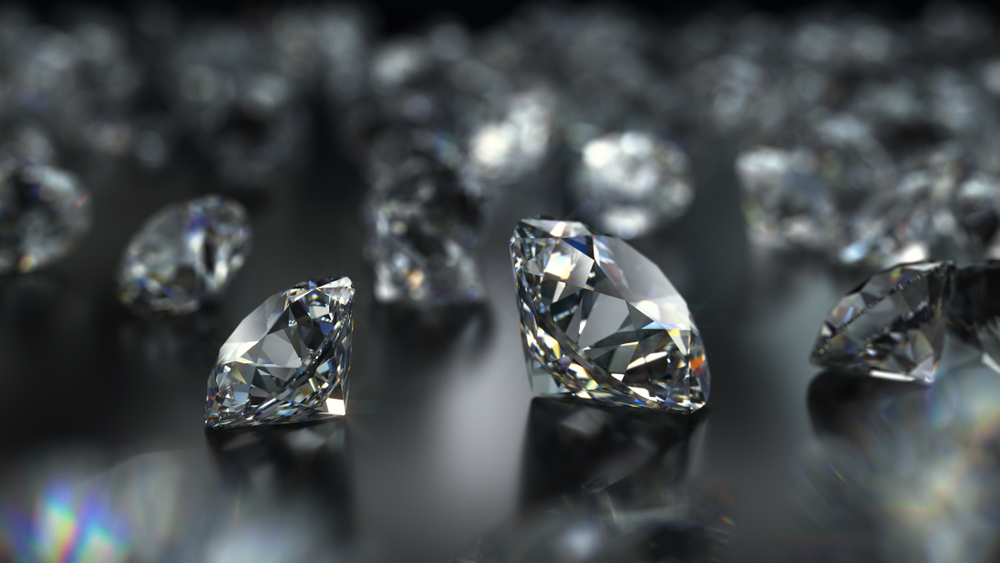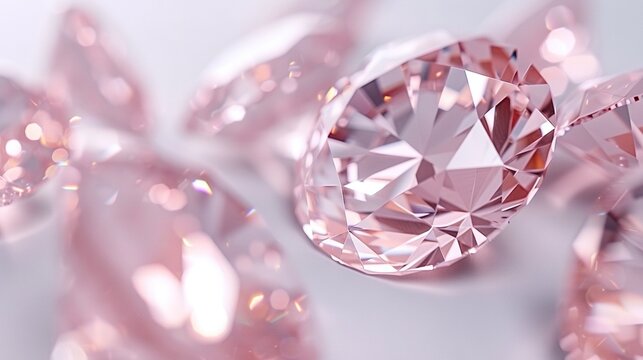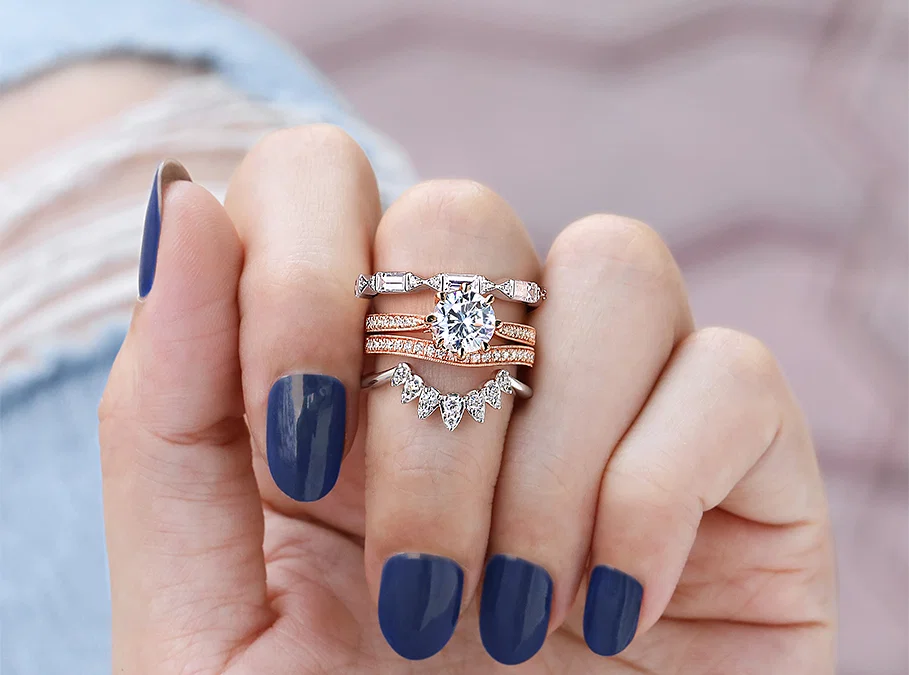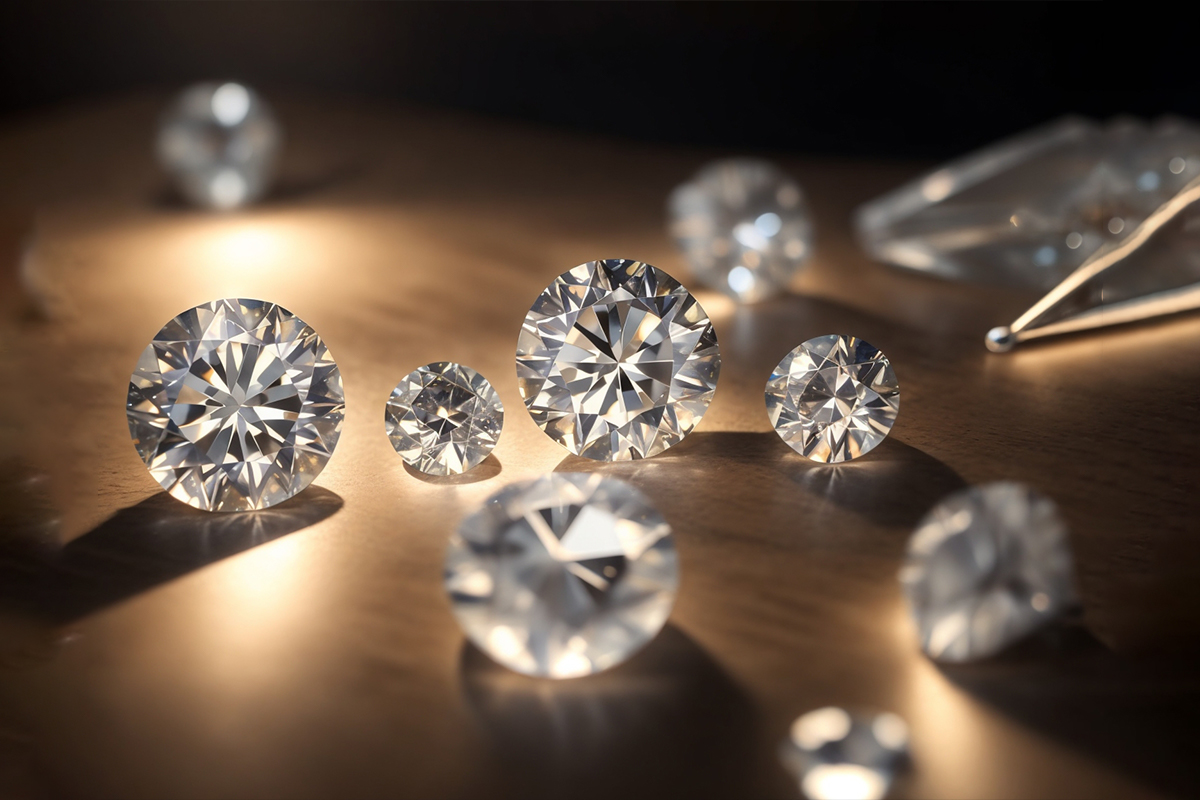
While evaluating lab grown diamonds, the 4Cs — Cut, Color, Clarity, and Carat weight — are as critical as they are for natural diamonds. These attributes assist with deciding a diamond’s quality and value, and understanding them can guide you in making an informed choice. This article explores each of the 4Cs and their significance in
While evaluating lab-grown diamonds, the 4Cs — Cut, Color, Clarity, and Carat weight — are as critical as they are for natural diamonds. These attributes assist with deciding a diamond’s quality and value, and understanding them can guide you in making an informed choice. This article explores each of the 4Cs and their significance in lab-grown diamonds.
Table of Contents
Cut
The cut of a diamond significantly impacts its brilliance and overall appearance. It alludes to how well the diamond has been shaped and faceted. The vital factors in deciding a diamond’s cut incorporate proportion, evenness, and clean.
Proportion is crucial as it affects how light interacts with the diamond. A proportional cut maximizes the diamond’s sparkle and fire. Evenness concerns the alignment of the facets. Good balance guarantees that light is reflected equitably, enhancing the diamond’s brilliance. Clean evaluates the quality of the diamond’s surface, with a great clean adding to a smooth and glossy appearance.
Lab-grown diamonds benefit from advanced cutting innovation, which often brings about superior accuracy and consistency, leading to exceptional evenness and clean.
Color
Color in diamonds is graded based on the absence of color, with a scale that ranges from D (colorless) to Z (light yellow or brown). The best diamonds are those with minimal color, as they show greater brilliance and a more refined look.
Diamonds graded D-F are thought of as colorless and address the greatest, showing no noticeable color. G-J diamonds are near colorless, with just inconspicuous traces of color that are typically vague to most spectators. K-Z diamonds display more noticeable color, which can affect their appearance and value.
Lab-grown diamonds can achieve high color grades, often reaching D-F, which makes them a magnificent choice for those looking for a colorless diamond.
Clarity
Clarity assesses the presence of internal or external flaws, known as incorporations and imperfections. The clarity scale ranges from Flawless (F), indicating no considerations or imperfections apparent under 10x magnification, to Included (I), where flaws are apparent to the naked eye.
Flawless (F) diamonds have no apparent internal or external flaws. Internally Flawless (IF) diamonds have no internal flaws except for may show minor external imperfections. VVS1-VVS2 (Very Marginally Included) diamonds have minute considerations that are challenging to identify considerably under magnification. VS1-VS2 (Very Marginally Included) diamonds have minor incorporations apparent under magnification however are not easily seen with the naked eye. SI1-SI2 (Somewhat Included) diamonds have incorporations that are apparent under magnification and may be noticeable to the naked eye. I1-I3 (Included) diamonds have incorporations noticeable to the naked eye, which may affect their brilliance and durability.
Lab-grown diamonds are often created in controlled conditions, leading to higher clarity grades compared to natural diamonds.
Carat Weight
Carat weight measures the size of the diamond, with one carat equivalent to 0.2 grams. While carat weight is a straightforward measurement, it significantly impacts a diamond’s cost and appearance.
It is important to recognize size and carat weight, as two diamonds of the same carat weight may appear changed in size contingent upon their cut proportions. Larger diamonds are rarer and in this way more costly. Carat weight can have a considerable effect on the overall expense of a diamond.
Lab-grown diamonds offer the advantage of potentially achieving larger carat loads at a lower value compared to natural diamonds, because of the controlled creation climate.
Conclusion
The 4Cs — Cut, Color, Clarity, and Carat weight — remain essential in evaluating lab-grown diamonds. These factors help in assessing the diamond’s quality as well as guarantee that you make an informed choice. With the potential to achieve high grades in each of these categories, lab grown diamonds 4Cs offer a convincing alternative to natural diamonds, consolidating quality and value in one beautiful package.
.
Cut
The cut of a diamond significantly impacts its brilliance and overall appearance. It alludes to how well the diamond has been shaped and faceted. The vital factors in deciding a diamond’s cut incorporate proportion, evenness, and clean.
Proportion is crucial as it affects how light interacts with the diamond. A proportional cut maximizes the diamond’s sparkle and fire. Evenness concerns the alignment of the facets. Good balance guarantees that light is reflected equitably, enhancing the diamond’s brilliance. Clean evaluates the quality of the diamond’s surface, with a great clean adding to a smooth and glossy appearance.
Lab-grown diamonds benefit from advanced cutting innovation, which often brings about superior accuracy and consistency, leading to exceptional evenness and clean.
Color
Color in diamonds is graded based on the absence of color, with a scale that ranges from D (colorless) to Z (light yellow or brown). The best diamonds are those with minimal color, as they show greater brilliance and a more refined look.
Diamonds graded D-F are thought of as colorless and address the greatest, showing no noticeable color. G-J diamonds are near colorless, with just inconspicuous traces of color that are typically vague to most spectators. K-Z diamonds display more noticeable color, which can affect their appearance and value.
Lab-grown diamonds can achieve high color grades, often reaching D-F, which makes them a magnificent choice for those looking for a colorless diamond.
Clarity
Clarity assesses the presence of internal or external flaws, known as incorporations and imperfections. The clarity scale ranges from Flawless (F), indicating no considerations or imperfections apparent under 10x magnification, to Included (I), where flaws are apparent to the naked eye.
Flawless (F) diamonds have no apparent internal or external flaws. Internally Flawless (IF) diamonds have no internal flaws except for may show minor external imperfections. VVS1-VVS2 (Very Marginally Included) diamonds have minute considerations that are challenging to identify considerably under magnification. VS1-VS2 (Very Marginally Included) diamonds have minor incorporations apparent under magnification however are not easily seen with the naked eye. SI1-SI2 (Somewhat Included) diamonds have incorporations that are apparent under magnification and may be noticeable to the naked eye. I1-I3 (Included) diamonds have incorporations noticeable to the naked eye, which may affect their brilliance and durability.
Lab-grown diamonds are often created in controlled conditions, leading to higher clarity grades compared to natural diamonds.
Carat Weight
Carat weight measures the size of the diamond, with one carat equivalent to 0.2 grams. While carat weight is a straightforward measurement, it significantly impacts a diamond’s cost and appearance.
It is important to recognize size and carat weight, as two diamonds of the same carat weight may appear changed in size contingent upon their cut proportions. Larger diamonds are rarer and in this way more costly. Carat weight can have a considerable effect on the overall expense of a diamond.
Lab-grown diamonds offer the advantage of potentially achieving larger carat loads at a lower value compared to natural diamonds, because of the controlled creation climate.
Conclusion
The 4Cs — Cut, Color, Clarity, and Carat weight — remain essential in evaluating lab-grown diamonds. These factors help in assessing the diamond’s quality as well as guarantee that you make an informed choice. With the potential to achieve high grades in each of these categories, lab-grown diamonds offer a convincing alternative to natural diamonds, consolidating quality and value in one beautiful package.






